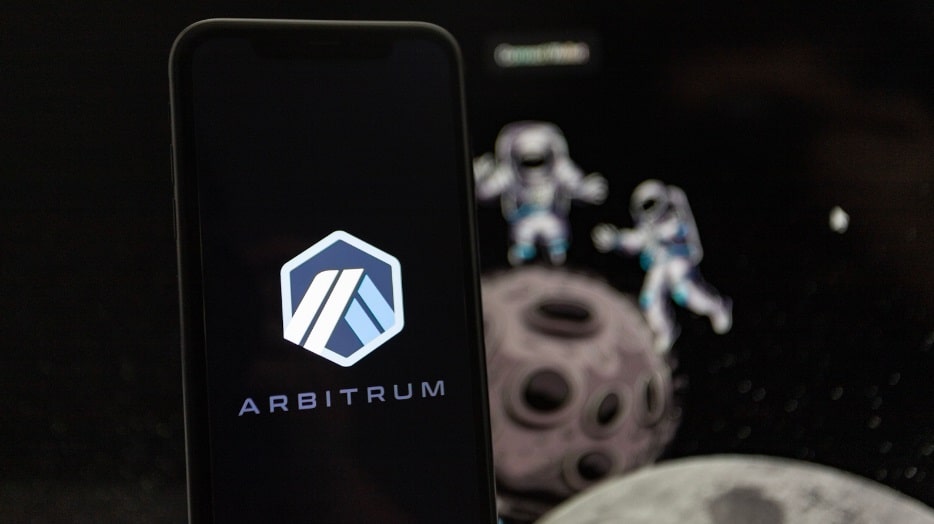Arbitrum (ARB) addresses reached an all-time high in May after new users flowed into the platform to make use of its DeFi and NFT offers. The peak activity news also helped ARB recover faster during the latest rally.
The Arbitrum network is now ranked among top Layer 2 solutions for Ethereum, and offers faster and clearer smart contracts for messages and activities between L1 and L2 addresses.
The address peak in Arbitrum was also sudden, with unique active wallets now close to 900,000. The generation of new wallets started the growth trend in March, and went vertical in the past two weeks. One of the reasons for the growth of Arbitrum is the direct targeting of developers. New teams have started using Arbitrum as a basis for their decentralized apps.
Source: Nansen
The other reason for the growth of Aave is the optimization of gas fees, which have fallen since the end of March, while transaction counts expanded.
Arbitrum already carries some leading multi-chain apps, including Uniswap, Sushi Swap, OKX DEX, Trader Joe, and Aave. Web3 gaming is also experiencing an active period, this time choosing Arbitrum’s tech for new competitive experiences.
The Arbitrum DAO is currently voting to add more projects as Orbit Chains, with opportunities to connect to other L1 or L2 networks.
Arbitrum Introduces Orbit Chains for Easier Infrastructure Creation
Arbitrum aims to grow more sustainably by drawing on crypto startups. One of the main tools are the Orbit Chains, which offers a fast creation of new layers. New projects can now spend a minimal time to build the desired features, setting up their mainnets without delay.
In a market where new tokens arrive every minute, projects choose Arbitrum for the immediate creation of new features.
Orbit Chains allow Arbitrum to become a hub for projects, making it similar to other platforms. Offering easier chain creation and connectivity was the main point behind Polkadot, Cosmos, and even Avalanche with its subnet creation.
DeFi Grows with ARB Connections to Other Chains
Arbitrum also offers a cross-chain bridge, which is highly liquid and has a daily turnover above $5M even on a slow day. The Arbitrum bridge is widely used for wrapped Ethereum and various stablecoins. The bridge is part of the DeFi ecosystem, where Arbitrum has grown its locked value to $2.76M.
The performance of DeFi on Arbitrum is an exception, as its biggest growth phase happened in late 2023. Unlike other networks, Arbitrum did not peak in 2021-2022, and instead is waiting for more sustainable growth.
Arbitrum recently started hosting liquid restaking, a tool to tap the value of locked ETH tokens. The Renzo multi-chain project increased its holdings on Arbitrum by 25% in a month, locking in more than $324M in notional value.
Bitcoin DeFi Starts to Spread to Arbitrum
Arbitrum’s growth may also be tied to attempts to use Bitcoin and tap its value in new decentralized tools. Wrapped BTC coins are not new and have been used as collateral in various projects. But now, platforms are competing again to integrate Bitcoin into decentralized finance.
Projects on Arbitrum create gamified solutions for Bitcoin DeFi, combined with NFT collections.
There is still no clear-cut way to bring BTC products on Arbitrum, as most of the offers will come from independent builders.
ARB Token Recovers Close to $1
Despite the growth of use cases, the ARB token is near its lower trading range at $0.99. The asset peaked above $2.20 in early 2024, and has returned to its baseline price.
ARB is now in a period of re-accumulation, though some traders expect a new downturn to the $0.80 range. However, during a period of increasing usage, ARB sets the expectations for a new rally. The token has traded for over a year, and has positioned itself successfully among leading L2 solutions.
Cryptopolitan reporting by Hristina Vasileva


 ,
, ) (@arbitrum)
) (@arbitrum) 






